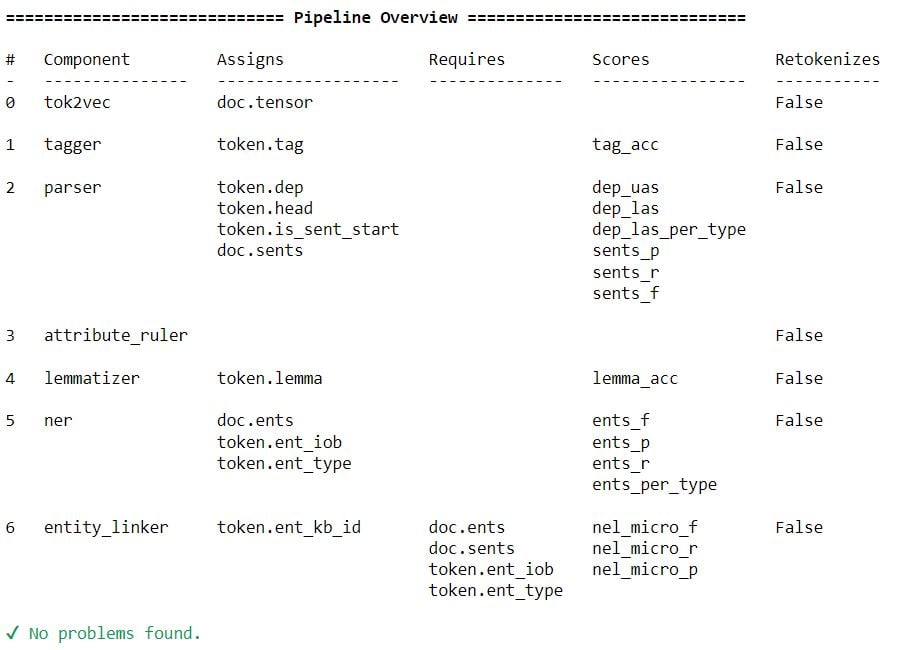spaCy pipelines
Natural Language Processing with spaCy

Azadeh Mobasher
Principal Data Scientist
spaCy pipelines
spaCyfirst tokenizes the text to produce aDocobject- The
Docis processed in several different steps of processing pipeline
import spacy
nlp = spacy.load("en_core_web_sm")
doc = nlp(example_text)
spaCy pipelines
- A pipeline is a sequence of pipes, or actors on data
- A
spaCyNER pipeline:- Tokenization
- Named entity identification
- Named entity classification
print([ent.text for ent in doc.ents])
Adding pipes
sentencizer:spaCypipeline component for sentence segmentation.
text = " ".join(["This is a test sentence."]*10000)en_core_sm_nlp = spacy.load("en_core_web_sm") start_time = time.time() doc = en_core_sm_nlp(text)print(f"Finished processing with en_core_web_sm model in {round((time.time() - start_time)/60.0 , 5)} minutes")
>>> Finished processing with en_core_web_sm model in 0.09332 minutes
Adding pipes
- Create a blank model and add a
sentencizerpipe:
blank_nlp = spacy.blank("en")blank_nlp.add_pipe("sentencizer")start_time = time.time() doc = blank_nlp(text) print(f"Finished processing with blank model in {round((time.time() - start_time)/60.0 , 5)} minutes")
>>> Finished processing with blank model in 0.00091 minutes
Analyzing pipeline components
nlp.analyze_pipes()analyzes aspaCypipeline to determine:- Attributes that pipeline components set
- Scores a component produces during training
- Presence of all required attributes
- Setting
prettytoTruewill print a table instead of only returning the structured data.
import spacy
nlp = spacy.load("en_core_web_sm")
analysis = nlp.analyze_pipes(pretty=True)
Analyzing pipeline components
Let's practice!
Natural Language Processing with spaCy



